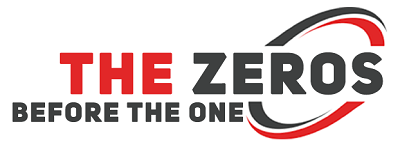There are many advantages to installing Traffic Signs and Barricades on your roadway. They are cheaper, but they are also easy to operate, UV resistant, and visible in low-visibility conditions. Below, we look at the advantages of each type of traffic sign or barrier. Which one is right for you? Read on to find out.
Less expensive
When it comes to cost, calming traffic measures are more effective if installed during road construction rather than afterward. Driver feedback signs, for example, are cheaper to install and more effective than barriers and signs. They work by giving drivers feedback that signals when they’re speeding up or slowing down. Even when drivers don’t slow down, most will at least attempt to Stay within posted speed limits.
The price of road signs and barriers varies by location, type, and quantity. Purchasing a large volume will typically lead to a price break. Most placards come with prices that include labor to assemble them in place; all panels used to build the sign, reflective film, sheeting, and hardware used for assembly. Once purchased, placards will cost a bit more to transport. That said, they’re worth it.
Easy to operate
If you’re looking for an easy-to-operate traffic sign or barricade, a lot of companies have what you’re looking for. Their traffic control tools are a necessary part of roadside construction. These tools are vital for your safety, but they can also help you prevent traffic accidents. The following are a few advantages of traffic control signs and barricades.
A different version clarifies design requirements for some traffic control devices, including road closure and detour signs. Other changes include the markings and portable changeable messages, such as the lane-closure sign. However, the changes will increase the price of specific traffic control devices, including symptoms. In addition to standard traffic control signs, there are also traffic drums, reflective traffic drums, and detour signs.
UV-resistant
Today’s high-tech UV-resistant traffic signs and barriers offer superior visibility and durability. These durable signs use high-intensity prismatic sheeting, reducing fading and ensuring maximum visibility even under low-light conditions. High-intensity prismatic also provides the highest degree of reflectivity. High-intensity colorful characters and barriers are made with heavy-duty aluminum and feature a swivel leg for easy installation. In addition, they are entirely recyclable and offer unlimited customization.
High-tech traffic signs and barriers come in a variety of sizes and styles. Type 3 barriers, for example, are a durable, long-term solution. Unlike traffic cones, they don’t fade in bright sunlight. You can use them for temporary or permanent placements. They are also compatible with flashing barricade lights. They are great for construction sites and road works. You can choose from bright-orange, reflective or holographic signs, depending on the location of the barrier. Learn more about it in Barricade Carnation WA as well.
Visible in low-visibility conditions
Traffic signs and barriers are vital for road safety, especially in secluded areas. They are installed permanently on the streets and provide necessary instructions for safe driving. Traffic signs need to be easily visible to drivers, no matter the day. Solar LED signs can improve visibility in low-visibility environments. These lights are highly reflective and can be programmed to flash in different patterns. If visibility is low, the lights can automatically turn on and off as they receive information from sensors.
Common uses
Various signs are used to convey information. For example, read road signs typically indicate stop conditions, and yellow signs warn drivers of upcoming hazards. Other colors, such as blue and green, guide drivers and show pedestrian and bicycle areas. They can also serve as regulatory or guidance signs. Horizontal rectangles are standard for road signs and barriers, while square and vertical rectangles are typically used as regulatory and direction signs. Depending on their purpose, various shapes and colors are also used for different characters.
Roadside and construction sites may utilize orange signs to indicate road work. Other standard colors used on roadside and construction sites include brown, green, and blue signals. The shapes and colors of these signs vary, but they all have their distinct meaning. For example, while many traffic signs come in the classic red, yellow, and green shades, there are also those in neon colors, including red and yellow. These signs guide drivers through different areas, such as construction zones.












